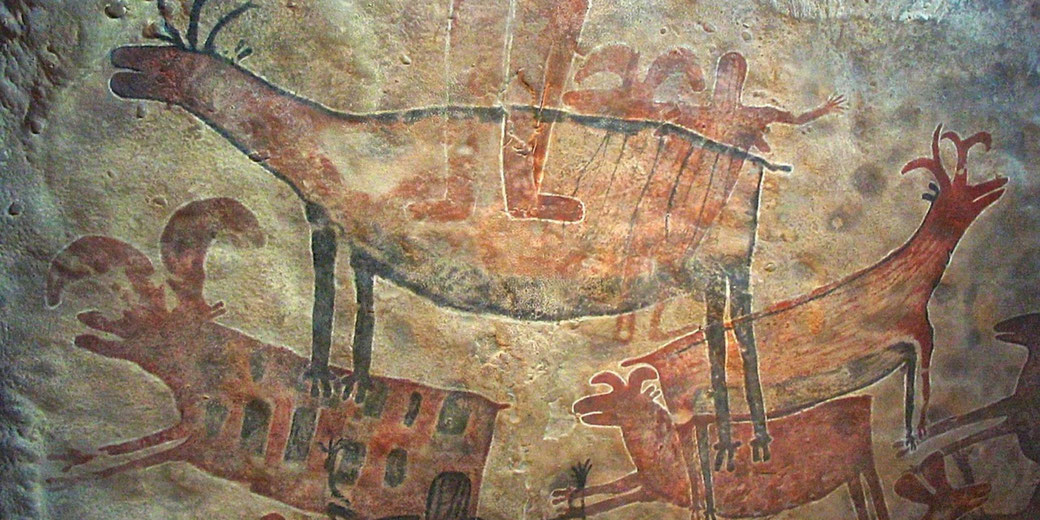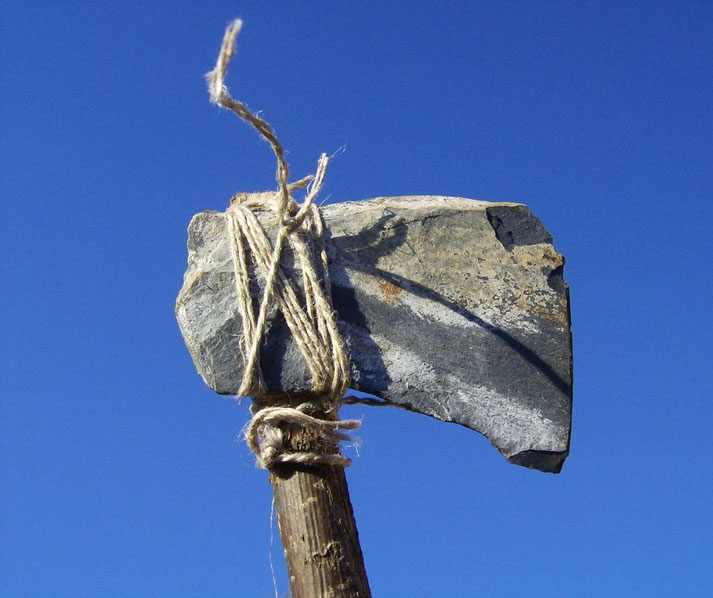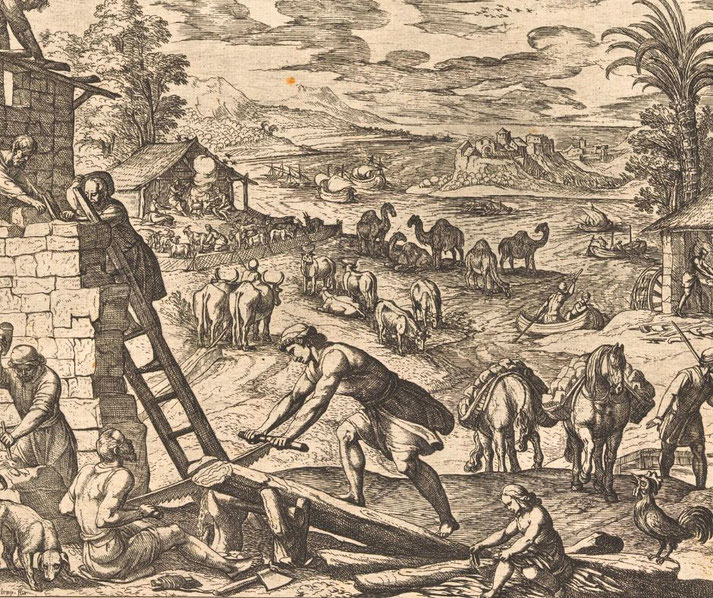Why early humans abandoned hunting and gathering for farming

For many generations, early humans wandered the Earth as hunter-gatherers, dependent on nature: tracking game and foraging for roots, fruits, and berries.
The world offered no certainty, only the fragile balance between feast and famine. Soon after, humans in different places around the world began to settle down and build the world’s first permanent towns and cities.
But what caused them to abandon everything for this new way of life?
How environmental change motivated innovation
Around 12,000 years ago, the Earth went through big climate changes that changed the places where early humans lived.
The end of the last Ice Age brought warmer and wetter conditions, which were an important part of creating new ecosystems.
As the vast ice sheets melted, grasslands and forests expanded, which provided more food for animals and humans alike.
However, this warming trend also caused some regions to dry out, which made conditions worse in areas that once had plenty of plant and animal life.
As a result, hunting and foraging became more unpredictable, so humans looked for more reliable sources of food.
In some regions, the changing environment greatly reduced the availability of wild game.
In response, large animals long hunted by humans began to disappear or move to better places.
As a result, early communities struggled to find enough food the old way.
Because climate changes also changed the seasons that hunter-gatherers depended on, the unpredictable cycles of drought and rainfall in certain regions made hunting and gathering not workable over time.

As human populations kept growing, the pressure on wild food sources became worse.
Around 8000 BCE, small communities grew, with estimates suggesting that the global population rose to about 5 million.
As more people were born, the demand for food grew and hunter-gatherer groups could only support a certain number of people as they relied on what the environment naturally provided.
Reliance on nature's unpredictable supply made it difficult to support larger populations.
Wild animals and edible plants were often used up, which forced groups to travel further to find enough food.
With each increase in population, the problem worsened and by 5000 BCE global population numbers had reached about 20 million.
In areas with many people, competition for resources became intense.
As a result, hunting alone could not always provide enough food for everyone.
The animals in a given area would be quickly used up, which led to periods of scarcity.
A lack of reliable game made communities at risk of starvation, which threatened the survival of these growing groups.
Because of this, the need for a stable and predictable food supply became urgent.
Why the Agricultural Revolution was a turning point
Around 12,000 years ago, human societies began to move from hunting and gathering to agriculture, known as the Neolithic Revolution.
The movement toward farming began around 10,000 BCE in areas like the Fertile Crescent, which stretched across modern-day Iraq, Syria, and Turkey.
In these fertile lands, people discovered that certain grains, like wheat and barley, could be planted and harvested.
At that point, they realized they could produce food themselves instead of wandering in search of it.
When humans learned to grow plants, they gained control over their food sources in ways they had never experienced before.
With the start of farming, humans no longer needed to rely only on the unpredictable availability of wild animals or plants.
The farming method known as cultivation allowed humans to choose and breed plants for better traits, such as larger grains or higher yields.
Because of the consistent supply of these crops over time, it became possible to support larger, more stable communities.

Since taming animals followed a similar path, humans began to tame and breed species that could serve multiple purposes.
Because cattle, sheep, goats, and pigs became valuable not only for their meat but also for milk, wool, and work, they were widely domesticated.
By domesticating these animals, early farmers obtained a reliable source of protein and materials, which meant that they could vary their diet and improve their living conditions.
The term ‘pastoralism’ means herding animals that became widespread in regions where farming alone was not sufficient to support life.
Such animals also gave manure that enriched the soil and improved crop yields.
The combined efforts of growing plants and domesticating animals led to the development of farming communities.
With a reliable food supply, people no longer needed to migrate in search of food.
They could settle in one place, build permanent buildings, and develop complex social systems. These agrarian farming communities grew around fertile areas such as river valleys, where crops grew well.
Over time, as the domestication of plants and animals spread, communities like these increased and grew, eventually giving rise to towns and cities.
The rise of permanent settlements
As people began to live in larger groups, working together became essential. Villages grew into complex communities where people did different jobs, as not everyone was needed to farm. Some people became potters, weavers, or builders.
The division of jobs led to new tools and methods, as people had the time to improve their skills.
For example, early farmers realized that simple digging sticks could be improved, leading to the development of the first ploughs around 4000 BCE.
The plough allowed humans to break up the soil more effectively, which meant that larger fields could be cultivated in less time.
In the fertile regions of Mesopotamia and Egypt, farmers used wooden ploughs pulled by oxen to prepare the land for planting.
By 6000 BCE, early forms of irrigation appeared in Mesopotamia, which allowed humans to cultivate land that had once been barren.
In regions along the Tigris and Euphrates rivers, where rainfall was often unpredictable, farmers built canals and ditches to carry water from the rivers to their fields.
By controlling water, they could grow crops even in dry seasons. Irrigation allowed for regular harvests that made food supplies more reliable.
Agricultural innovation also helped expand farming into areas that were previously not good for agriculture, though it was not used widely in other places until around 4000 BCE.
Populations increased because farming communities grew stronger.
With permanent homes, people could spend more time on building strong and lasting structures, such as granaries.
Granaries are large storage buildings made from mudbrick or stone that let people keep extra grain for long periods.
The introduction of surplus storage made sure that communities had enough food during times when crops were low or when there was a drought. It meant they no longer faced the same dangers as hunter-gatherers.
Societies became more settled, and the ability to store extra food helped create trade between different regions.
In places like Çatalhöyük in modern-day Turkey, evidence shows that these early settlements from 7500 BCE developed detailed social systems. Trade networks and shared responsibilities kept people connected.

Social and power changes
As people started to farm the land and collect extra food, differences in wealth appeared.
Those with larger plots of land or more animals became more powerful in their communities.
In early Mesopotamian city-states like Ur and Uruk, landowners had power over others because they could command workers and control food supplies.
This led to a clear social order, where a small group had the resources and most people worked the land.
Gender roles also changed when people began living in one place. In nomadic societies, men and women often shared jobs like hunting, gathering, and looking after children.
In farming communities, men usually did the harder physical work like ploughing and looking after animals, and women mainly did household jobs and raised children.
In Egypt, for example, men were often the main farmers. Women focused on the home.
Women in some societies, like Sumerian women in early Sumer, had important roles in religion and social life, while the general move towards male-controlled work systems slowly supported male-led social structures.
Because farming made life more stable, people had more time to focus on art, religion, and skilled crafts.
In Çatalhöyük, archaeologists have found signs of detailed religious actions, including shrines that were decorated with wall paintings and small statues.
Settlements like this helped people create shared beliefs and traditions that gave them a strong group identity.
The availability of agricultural surplus also supported people like craft workers and religious leaders who were able to spend their time on cultural work instead of finding food.
The development of specialised skills led to the making of pottery, cloth, and early writing that all showed how these societies were growing in knowledge and skill.
As populations grew, leaders appeared to organise work, manage supplies, and deal with disagreements.
In 3100 BCE in ancient Egypt, unifying ruler Narmer of Upper and Lower Egypt showed how central power was becoming stronger.
Such rulers often claimed divine support for their rule, and this increased their status and confirmed the social order.
The move to living in one place brought major changes to society and culture, and it prepared the way for future states.
The birth of the first cities
The extra food and materials also encouraged trading, both inside and between communities.
As farming groups got bigger, they traded things like grain, pottery, and tools that created a web of connected settlements.
In places like the Indus Valley and ancient Egypt, these trade routes connected faraway groups and allowed goods and new ideas to travel.
The increase in interregional exchange led to new inventions, such as better ways to farm and early writing systems.
Writing became very important for keeping track of people and supplies, since this made it easier to run larger and more organised societies.
When people had permanent settlements, it eventually led to cities.
Such cities became places for trade, government, and culture, and they attracted people from nearby areas.
In Sumer, cities like Uruk grew into busy centres where large buildings like temples and palaces showed how life was becoming more advanced.
Cities gave space for big building projects, organised religion, and social ranks.
Communities that came from cities like these created the first official systems that included laws, armies, and taxes.
Such systems made it possible to rule large groups of people and take over new lands.
Empires like the Akkadian Empire that began in Mesopotamia around 2334 BCE and Egypt's Old Kingdom were results of these changes.
As farming societies grew more advanced, they formed early states and set the stage for progress in science, art, and technology.
What do you need help with?
Download ready-to-use digital learning resources
Copyright © History Skills 2014-2025.
Contact via email
With the exception of links to external sites, some historical sources and extracts from specific publications, all content on this website is copyrighted by History Skills. This content may not be copied, republished or redistributed without written permission from the website creator. Please use the Contact page to obtain relevant permission.





